Asp.Net MVC 5使用Identity之简单的注册和登陆
由于.Net MVC 5登陆和注册方式有很多种,但是Identity方式去实现或许会更简单更容易理解
首先新建一个项目
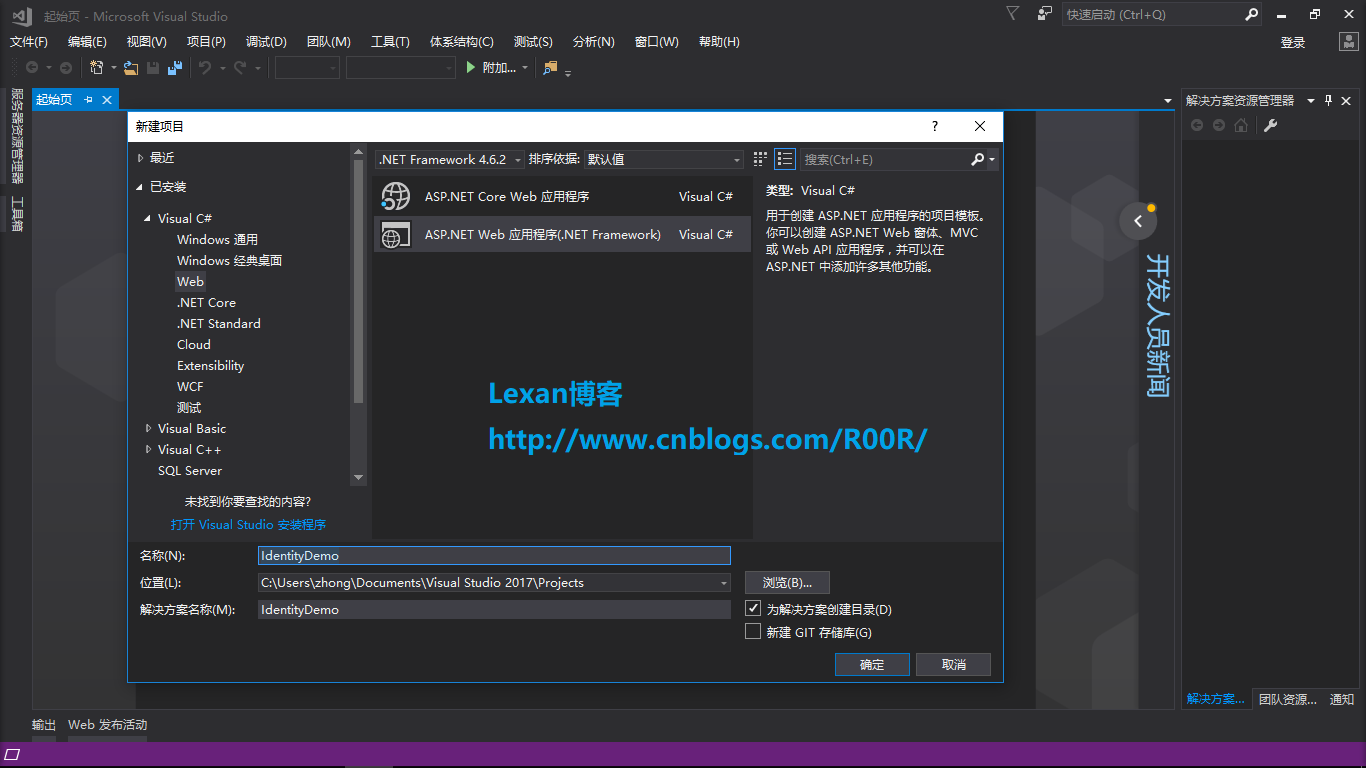
其次如下选择Empty和MVC的选项
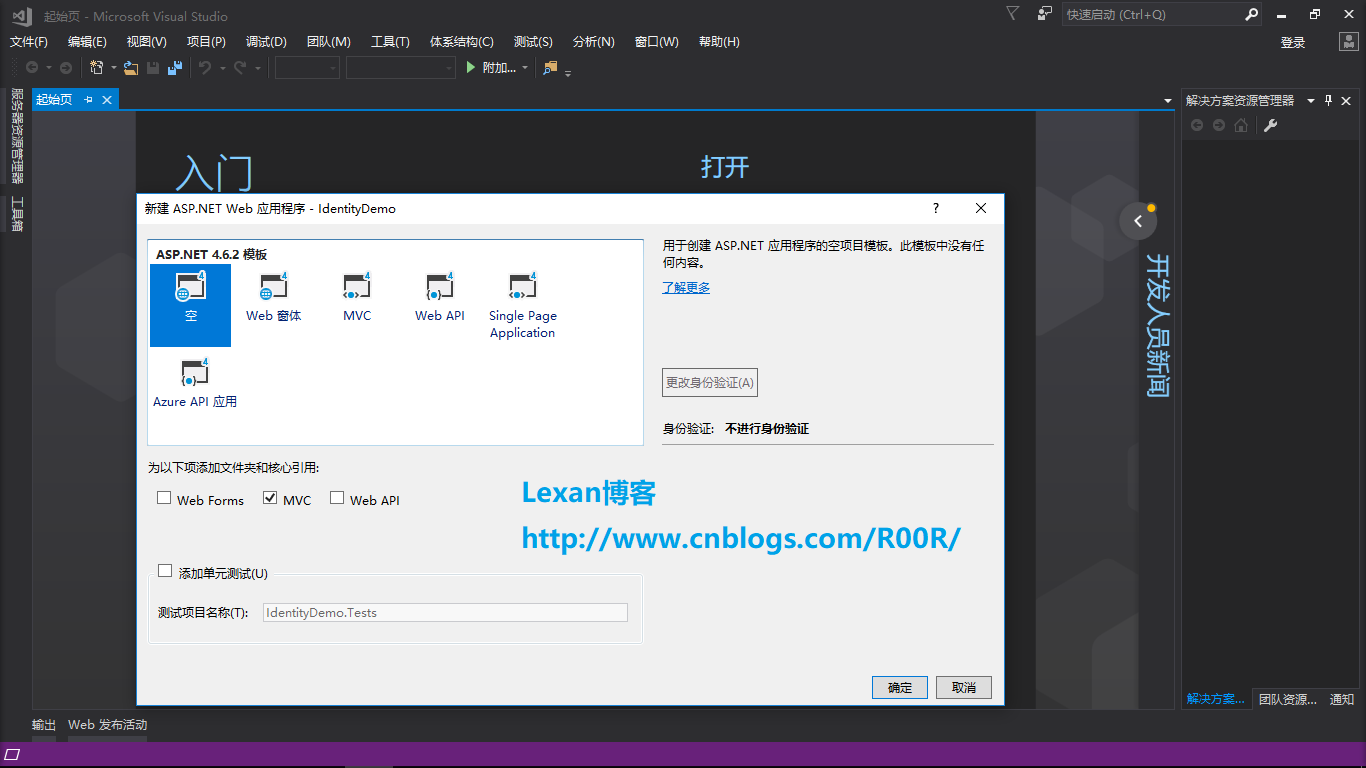
然后打开NuGet包管理器分别安装几个包
- EntityFramework
- Microsoft.AspNet.Identity.Core
- Microsoft.AspNet.Identity.EntityFramework
- Microsoft.AspNet.Identity.Owin
- Modernizr
- Microsoft.Owin.Host.SystemWeb
- Bootstrap
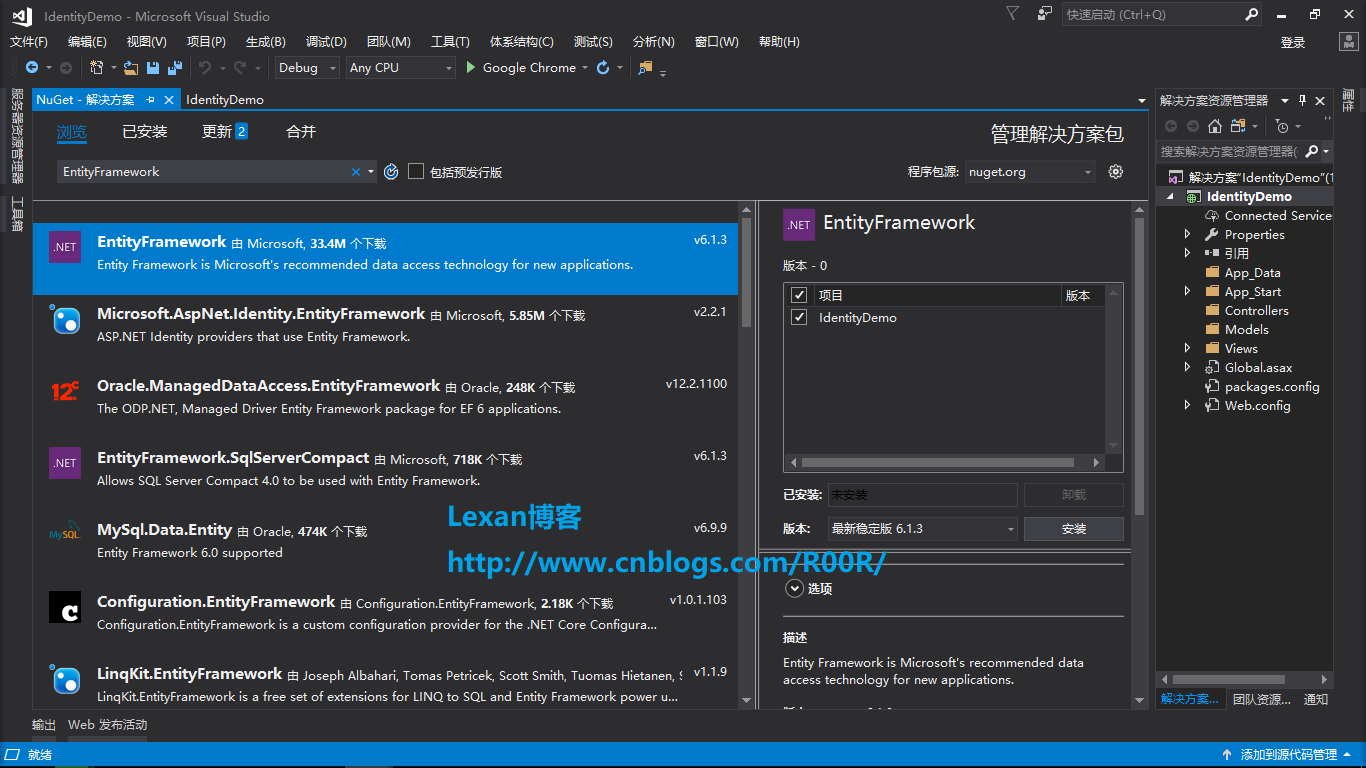
然后往Models文件夹里面添加ApplicationUser类,SignInModel类,SignUpModel类,ApplicationDbContext类,当然ApplicationDbContext类你也可以分到DbContext到另一个类库,我这是做演示用的,分层不用么这么明确
----------------------------------------------------------------------
ApplicationUser类
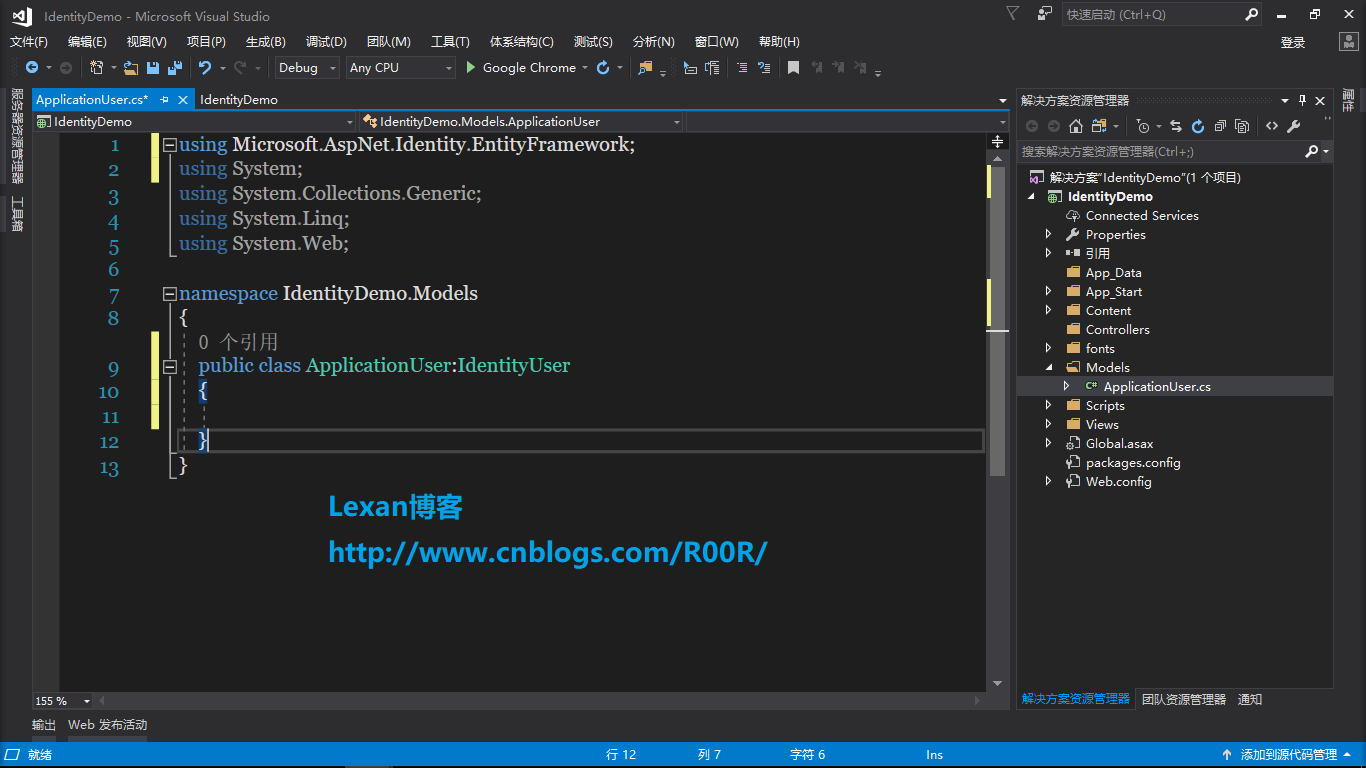
ApplicationDbContext类
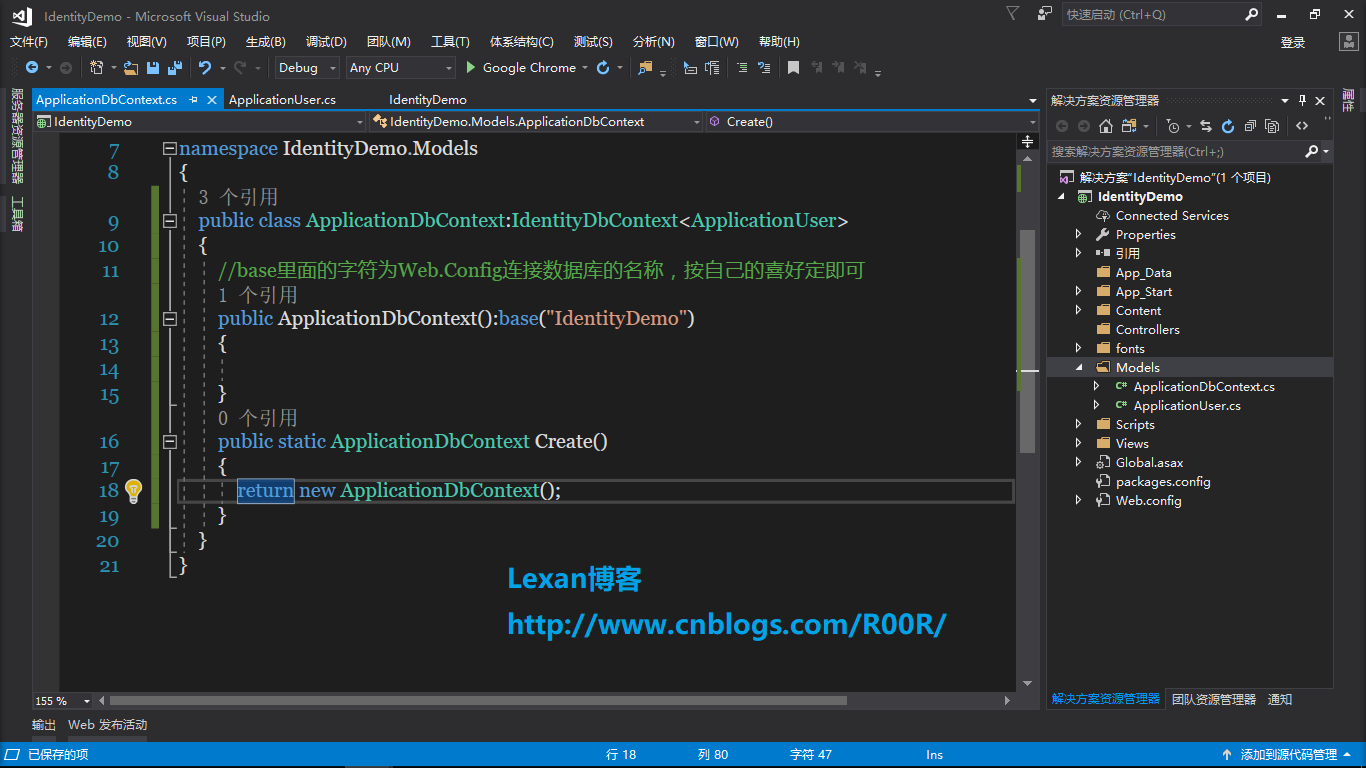
SignInModel类
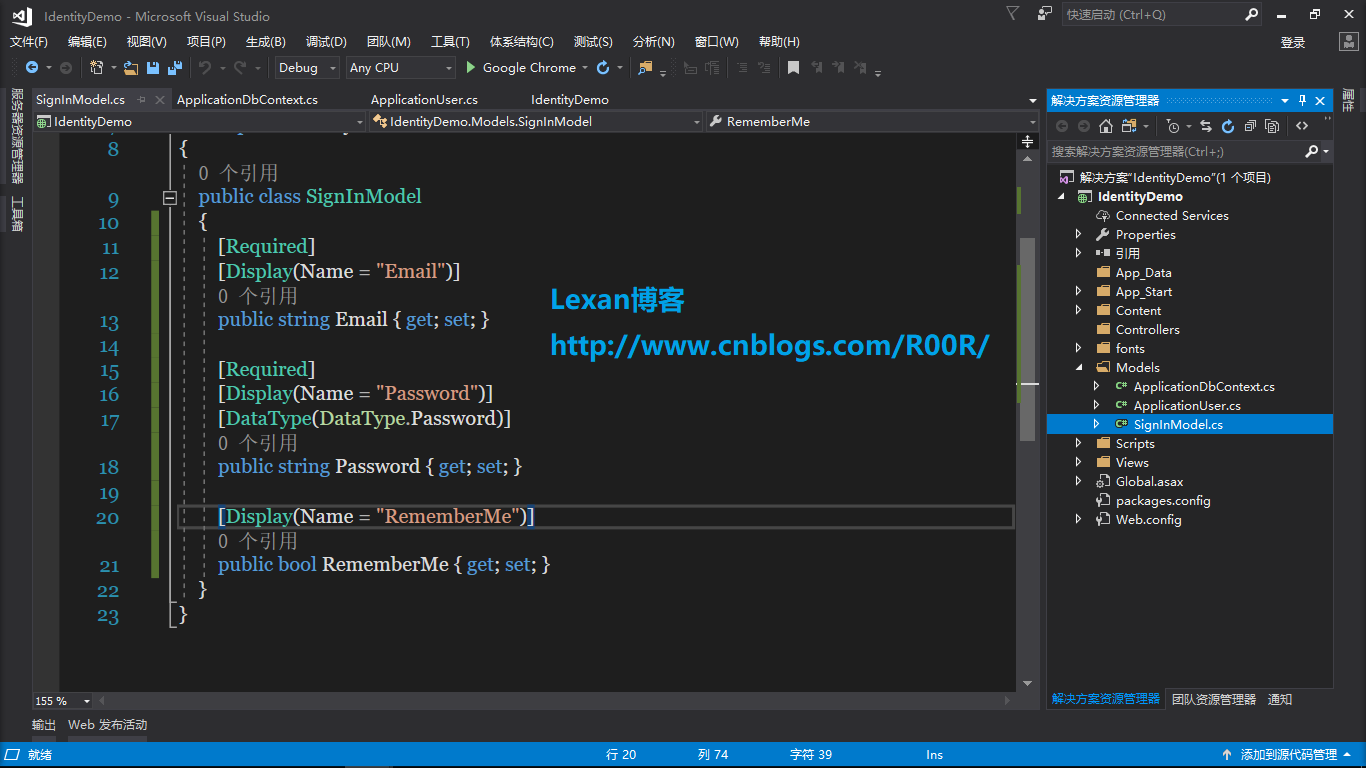
SignUpModel类

然后往App_Start文件夹里面添加ApplicationSignInManager类,ApplicationUserManager类,ApplicationUserStore类
---------------------------------------------------------------------
ApplicationUserManager类
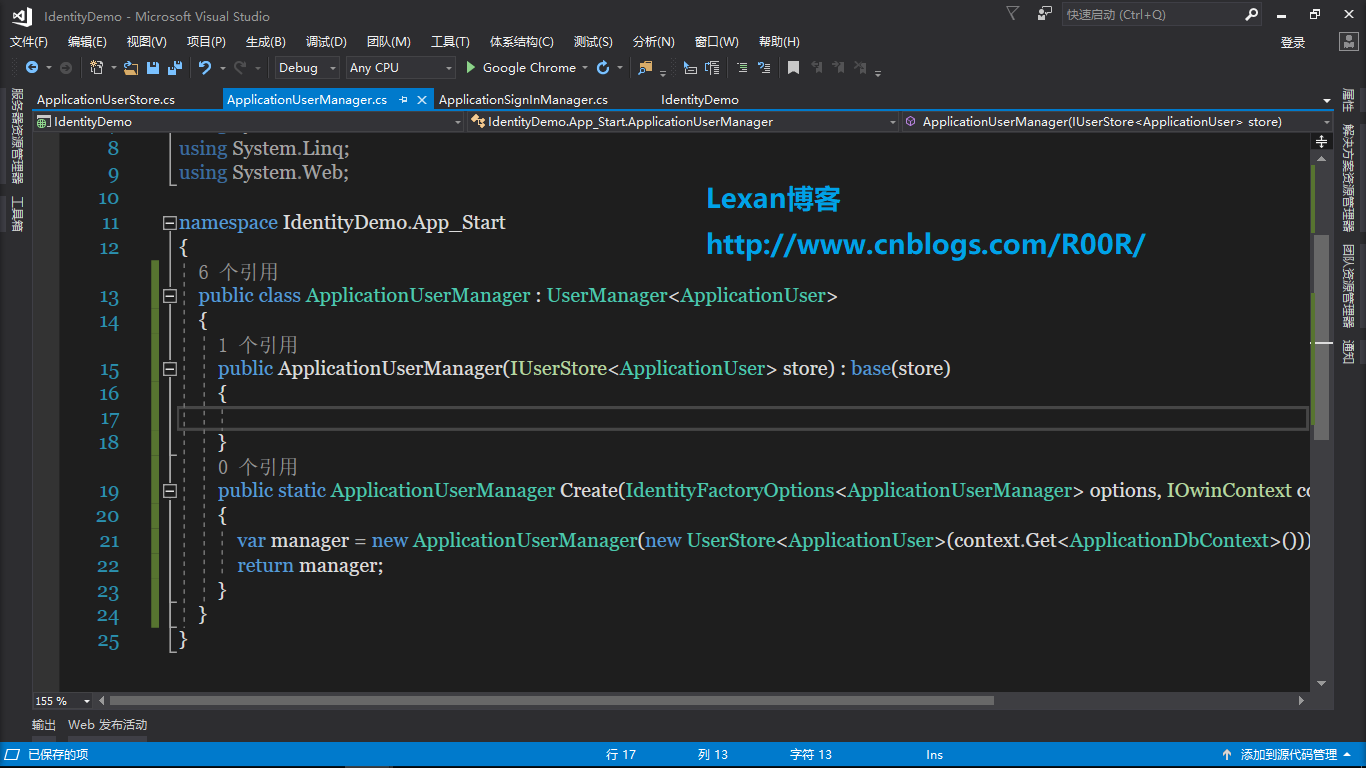
ApplicationSignInManager类
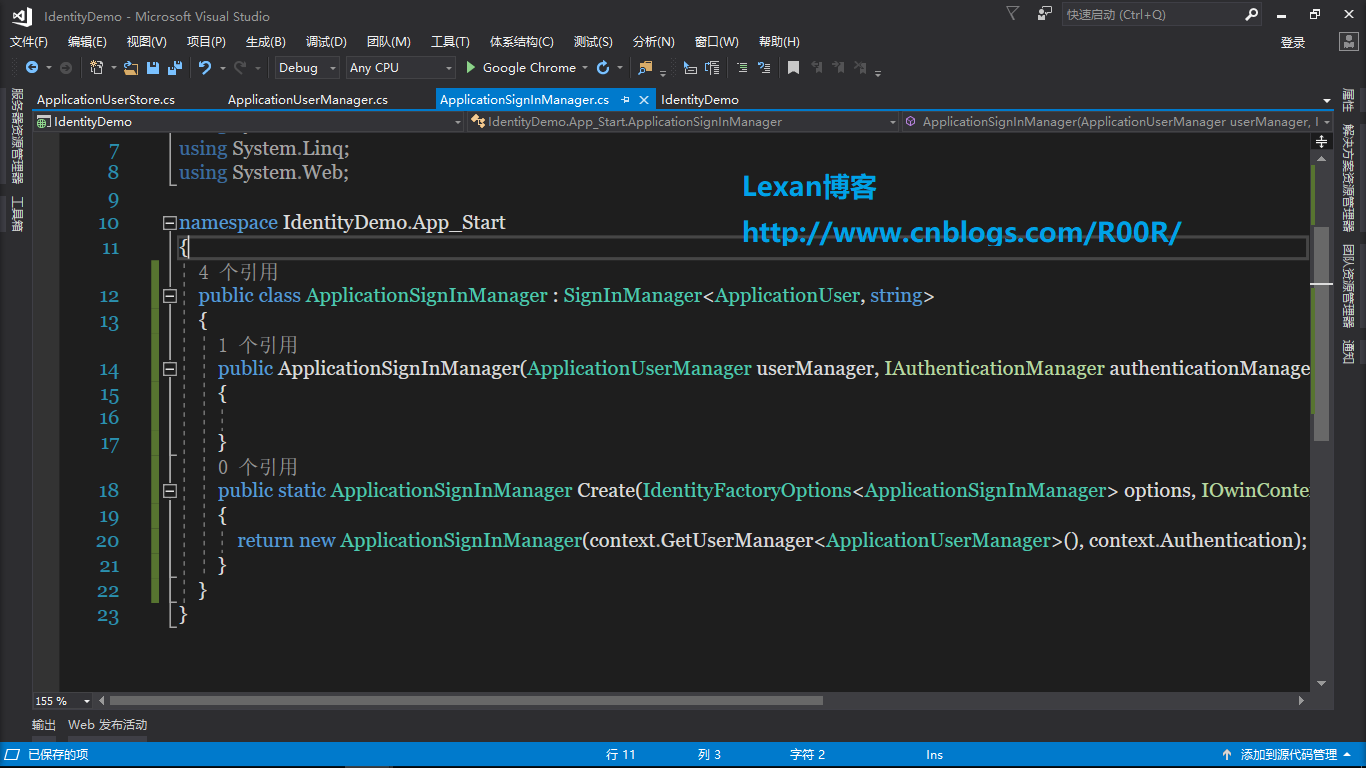
ApplicationUserStore类
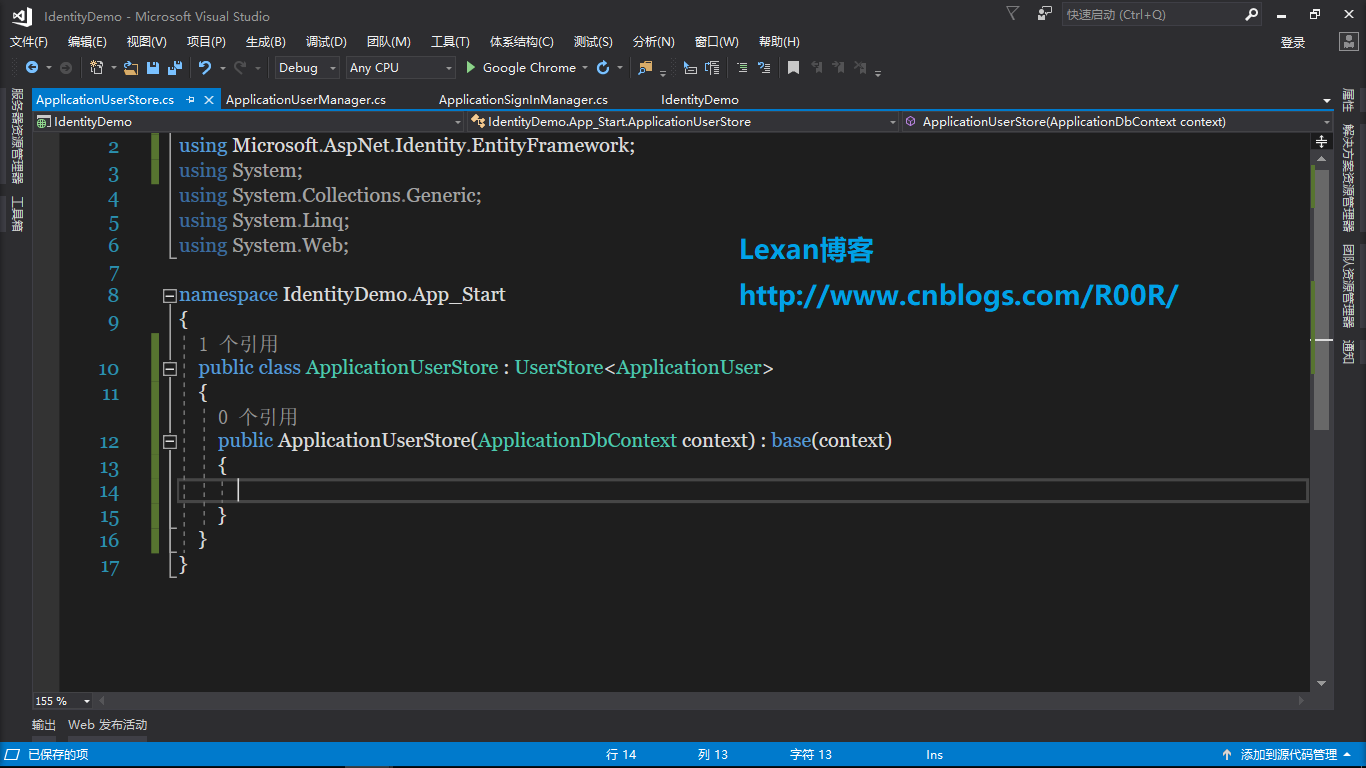
然后往Controller文件夹里面添加HomeController控制器,AccountController控制器
先往HomeController控制器里添加index视图

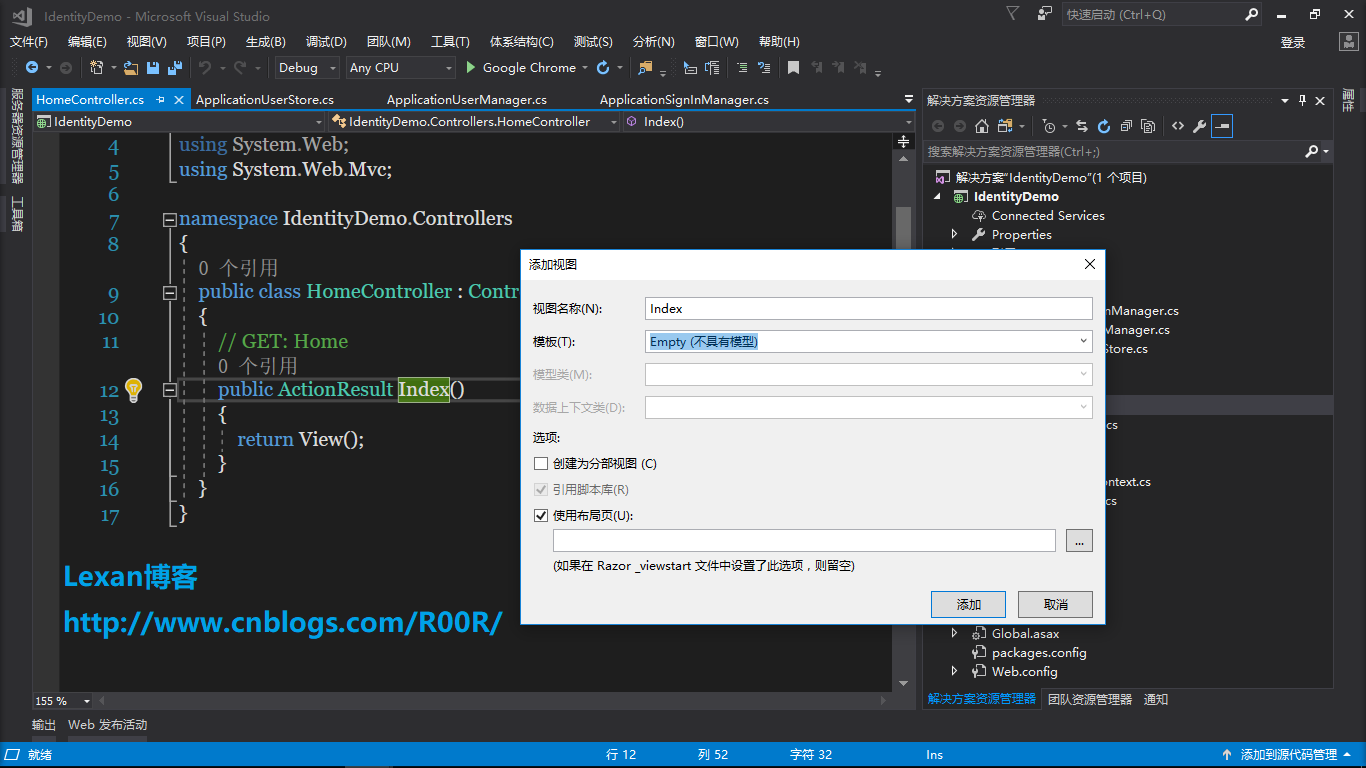
index视图代码
@using Microsoft.AspNet.Identity
@{
ViewBag.Title = "Index";
} <h2>Index</h2>
@if (Request.IsAuthenticated)
{
using (Html.BeginForm("LogOff", "Account", FormMethod.Post, new { id = "logoutForm", @class = "navbar-right" }))
{
@Html.AntiForgeryToken()
<p>Hello @User.Identity.GetUserName()</p>
<ul>
<li><a href="javascript:document.getElementById('logoutForm').submit()">Log off</a></li>
</ul>
}
}
else
{
<ul>
<li>
@Html.ActionLink("Login", "Login", "Account")
</li>
<li>
@Html.ActionLink("Register", "Register", "Account")
</li>
</ul>
}
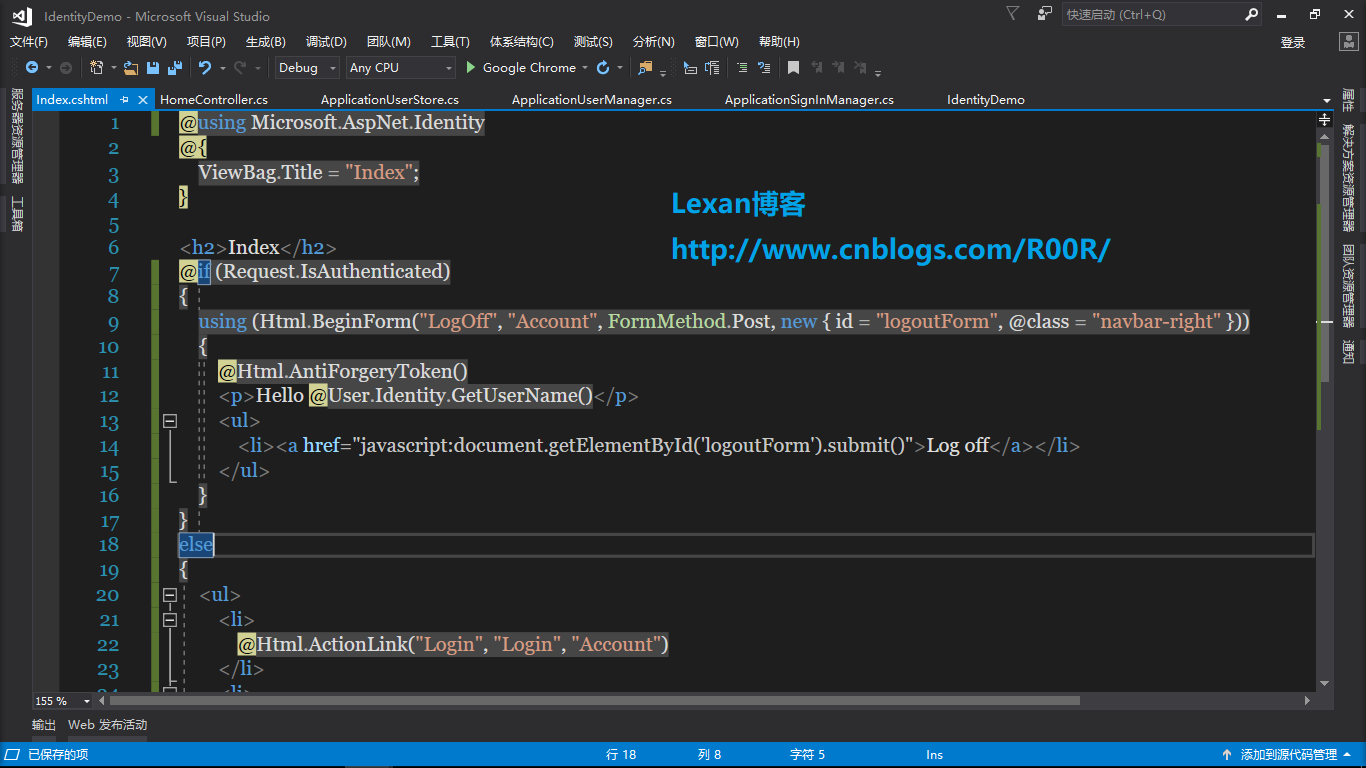
然后AccountController控制器代码
private ApplicationSignInManager signInManager;
private ApplicationUserManager userManager; public ApplicationSignInManager SignInManager
{
get
{
return signInManager ?? HttpContext.GetOwinContext().Get<ApplicationSignInManager>();
}
private set
{
signInManager = value;
}
}
public ApplicationUserManager UserManager
{
get { return userManager ?? HttpContext.GetOwinContext().GetUserManager<ApplicationUserManager>(); }
private set
{
userManager = value;
}
} [AllowAnonymous]
public ActionResult Login(string returnUrl)
{
ViewBag.ReturnUrl = returnUrl;
return View();
}
[HttpPost]
[AllowAnonymous]
[ValidateAntiForgeryToken]
public async Task<ActionResult> Login(SignInModel model, string returnUrl)
{
if (!ModelState.IsValid)
{
return View(model);
}
var result = await SignInManager.PasswordSignInAsync(model.Email, model.Password, model.RememberMe, shouldLockout: false);
switch (result)
{
case SignInStatus.Success:
return RedirectToLocal(returnUrl);
case SignInStatus.Failure:
default:
ModelState.AddModelError("", "登陆无效");
return View(model);
} } [AllowAnonymous]
public ActionResult Register()
{
return View();
} [HttpPost]
[AllowAnonymous]
[ValidateAntiForgeryToken]
public async Task<ActionResult> Register(SignUpModel model)
{
if (ModelState.IsValid)
{
var user = new ApplicationUser { UserName = model.Email, Email = model.Email };
var result = await UserManager.CreateAsync(user, model.Password);
if (result.Succeeded)
{
await SignInManager.SignInAsync(user, isPersistent: false, rememberBrowser: false);
return RedirectToAction("Index", "Home");
}
AddErrors(result);
}
return View(model);
}
[HttpPost]
[ValidateAntiForgeryToken]
public ActionResult LogOff()
{
AuthenticationManager.SignOut();
return RedirectToAction("Index", "Home");
}
private void AddErrors(IdentityResult result)
{
foreach (var error in result.Errors)
{
ModelState.AddModelError("", error);
}
}
private ActionResult RedirectToLocal(string returnUrl)
{
if (Url.IsLocalUrl(returnUrl))
{
return Redirect(returnUrl);
}
return RedirectToAction("Index", "Home");
}
private IAuthenticationManager AuthenticationManager
{
get { return HttpContext.GetOwinContext().Authentication; }
}
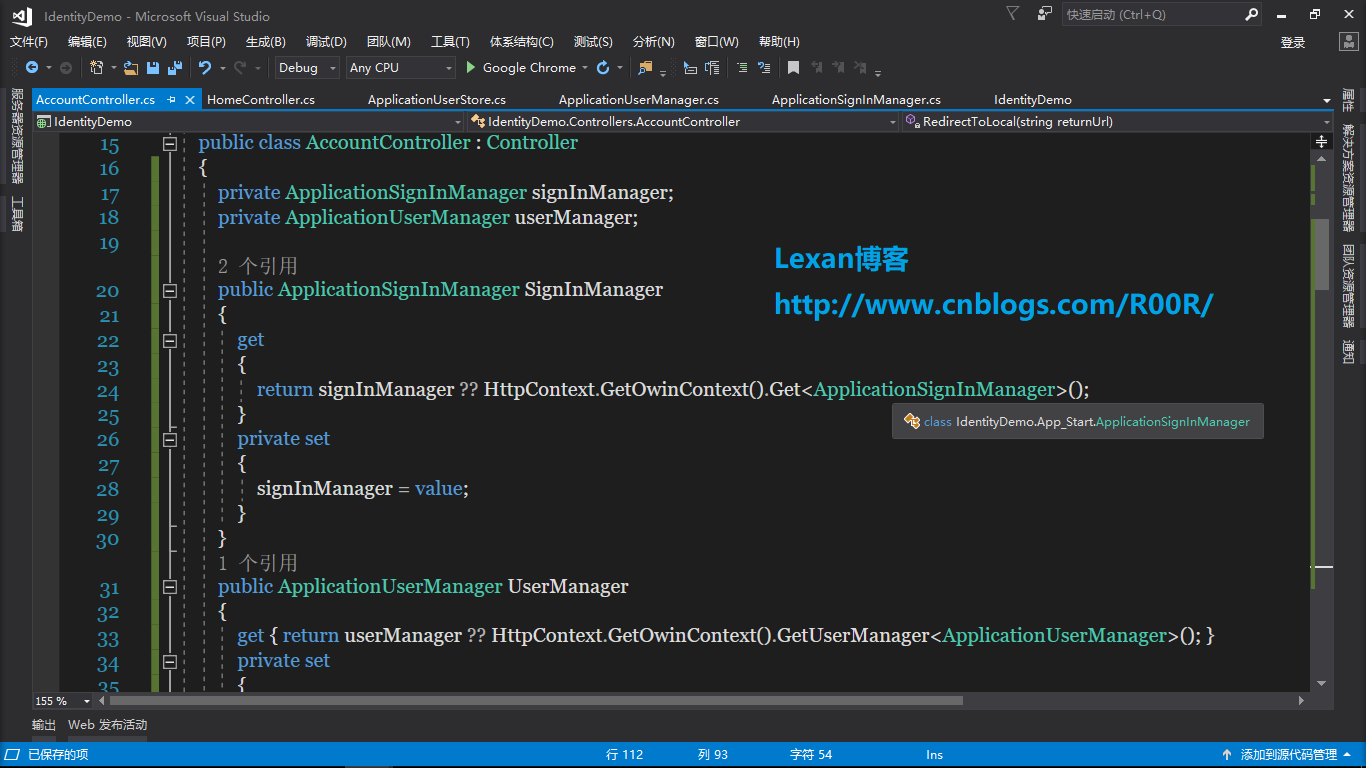
然后分别添加生成Login和Register页面


Login页面代码
@model IdentityDemo.Models.SignInModel
@{
ViewBag.Title = "Login";
}
<h2>Login</h2>
@using (Html.BeginForm("Login", "Account", new { ReturnUrl = ViewBag.ReturnUrl }, FormMethod.Post))
{
@Html.AntiForgeryToken()
<div class="form-horizontal">
<h4>SignInModel</h4>
<hr />
@Html.ValidationSummary(true, "", new { @class = "text-danger" })
<div class="form-group">
@Html.LabelFor(model => model.Email, htmlAttributes: new { @class = "control-label col-md-2" })
<div class="col-md-10">
@Html.TextBoxFor(model => model.Email, new { htmlAttributes = new { @class = "form-control" } })
@Html.ValidationMessageFor(model => model.Email, "", new { @class = "text-danger" })
</div>
</div>
<div class="form-group">
@Html.LabelFor(model => model.Password, htmlAttributes: new { @class = "control-label col-md-2" })
<div class="col-md-10">
@Html.PasswordFor(model => model.Password, new { htmlAttributes = new { @class = "form-control" } })
@Html.ValidationMessageFor(model => model.Password, "", new { @class = "text-danger" })
</div>
</div>
<div class="form-group">
@Html.LabelFor(model => model.RememberMe, htmlAttributes: new { @class = "control-label col-md-2" })
<div class="col-md-10">
<div class="checkbox">
@Html.CheckBoxFor(model => model.RememberMe)
@Html.ValidationMessageFor(model => model.RememberMe, "", new { @class = "text-danger" })
</div>
</div>
</div>
<div class="form-group">
<div class="col-md-offset-2 col-md-10">
<input type="submit" value="SignIn" class="btn btn-default" />
</div>
</div>
</div>
}
<div>
@Html.ActionLink("注册", "Register")
</div>
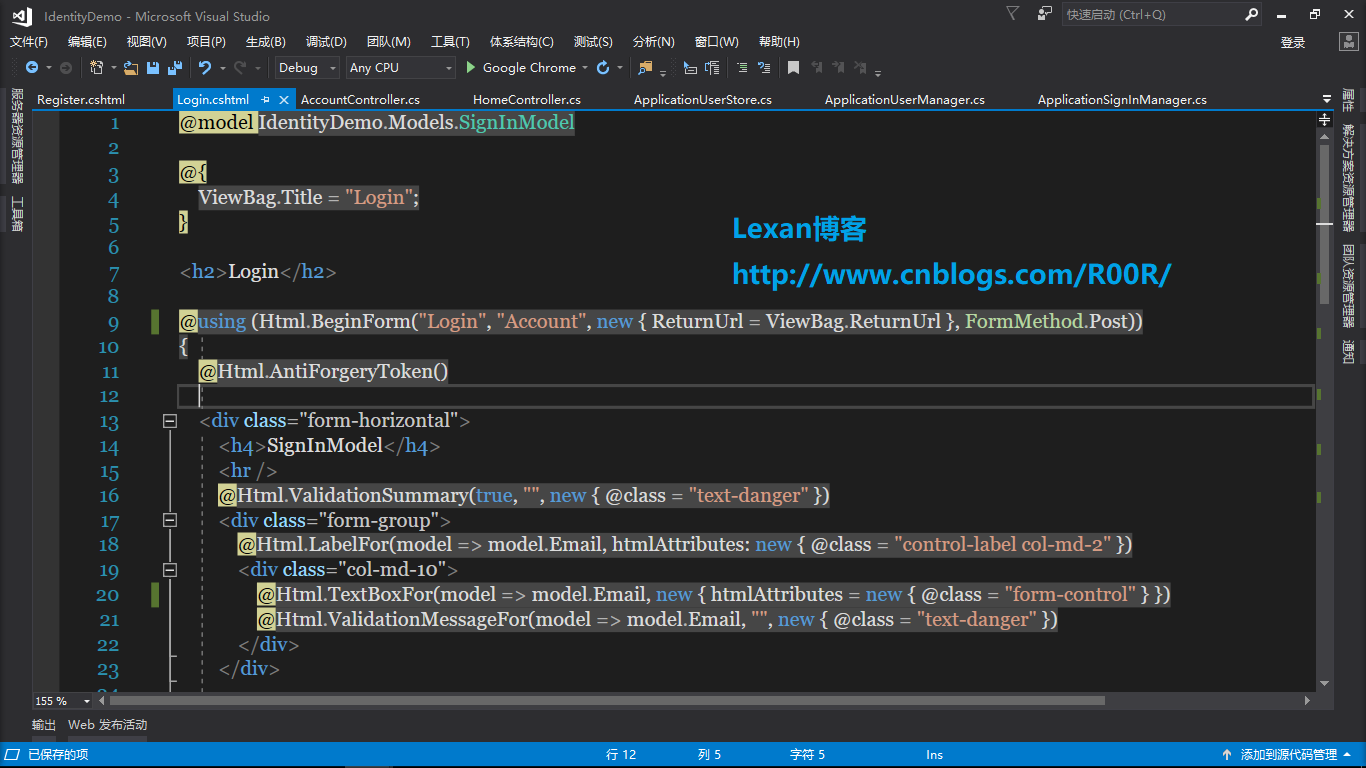
Register页面代码
@model IdentityDemo.Models.SignUpModel
@{
ViewBag.Title = "Register";
}
<h2>Register</h2>
@using (Html.BeginForm("Register", "Account", FormMethod.Post))
{
@Html.AntiForgeryToken()
<div class="form-horizontal">
<h4>SignUpModel</h4>
<hr />
@Html.ValidationSummary(true, "", new { @class = "text-danger" })
<div class="form-group">
@Html.LabelFor(model => model.Email, htmlAttributes: new { @class = "control-label col-md-2" })
<div class="col-md-10">
@Html.TextBoxFor(model => model.Email, new { htmlAttributes = new { @class = "form-control" } })
</div>
</div>
<div class="form-group">
@Html.LabelFor(model => model.Password, htmlAttributes: new { @class = "control-label col-md-2" })
<div class="col-md-10">
@Html.PasswordFor(model => model.Password, new { htmlAttributes = new { @class = "form-control" } })
</div>
</div>
<div class="form-group">
@Html.LabelFor(model => model.ConfirmPassword, htmlAttributes: new { @class = "control-label col-md-2" })
<div class="col-md-10">
@Html.PasswordFor(model => model.ConfirmPassword, new { htmlAttributes = new { @class = "form-control" } })
</div>
</div>
<div class="form-group">
<div class="col-md-offset-2 col-md-10">
<input type="submit" value="SignUp" class="btn btn-default" />
</div>
</div>
</div>
}
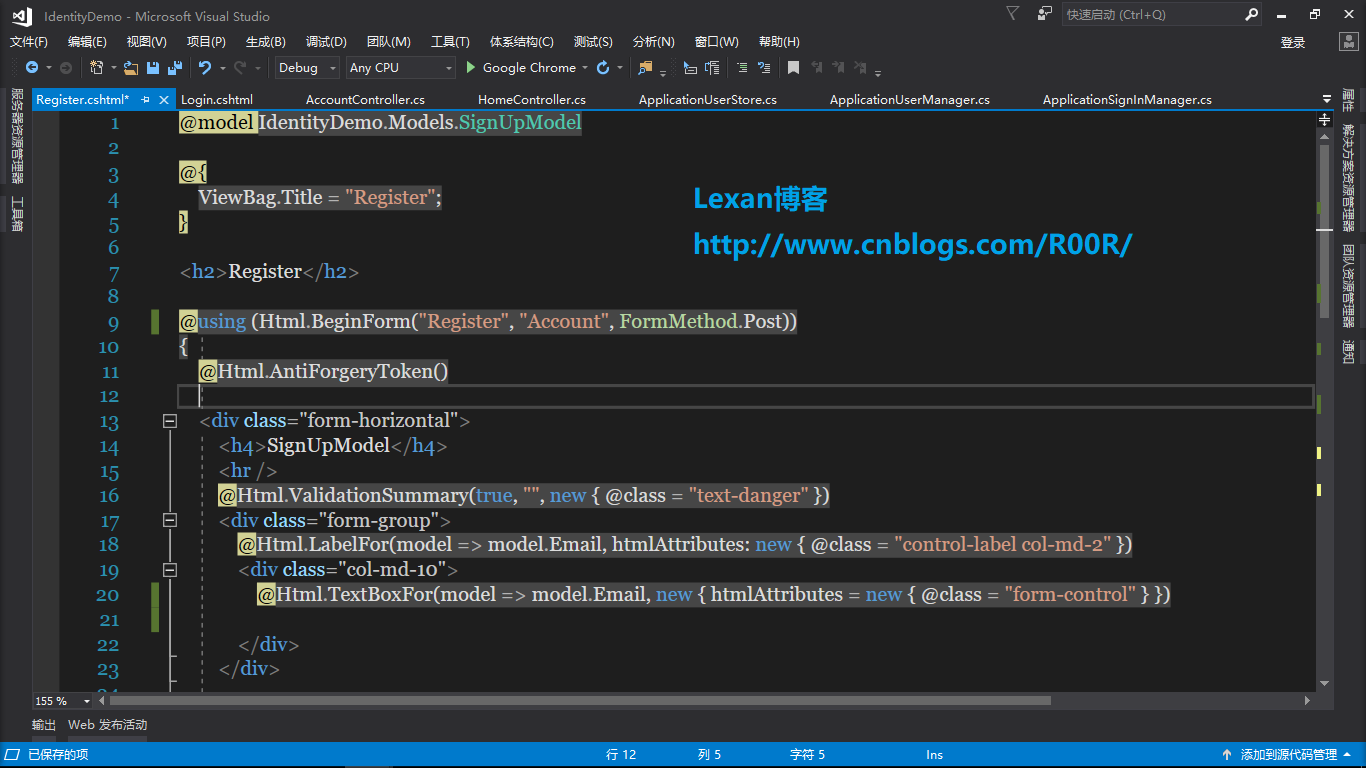
然后往项目的根目录添加Startup类
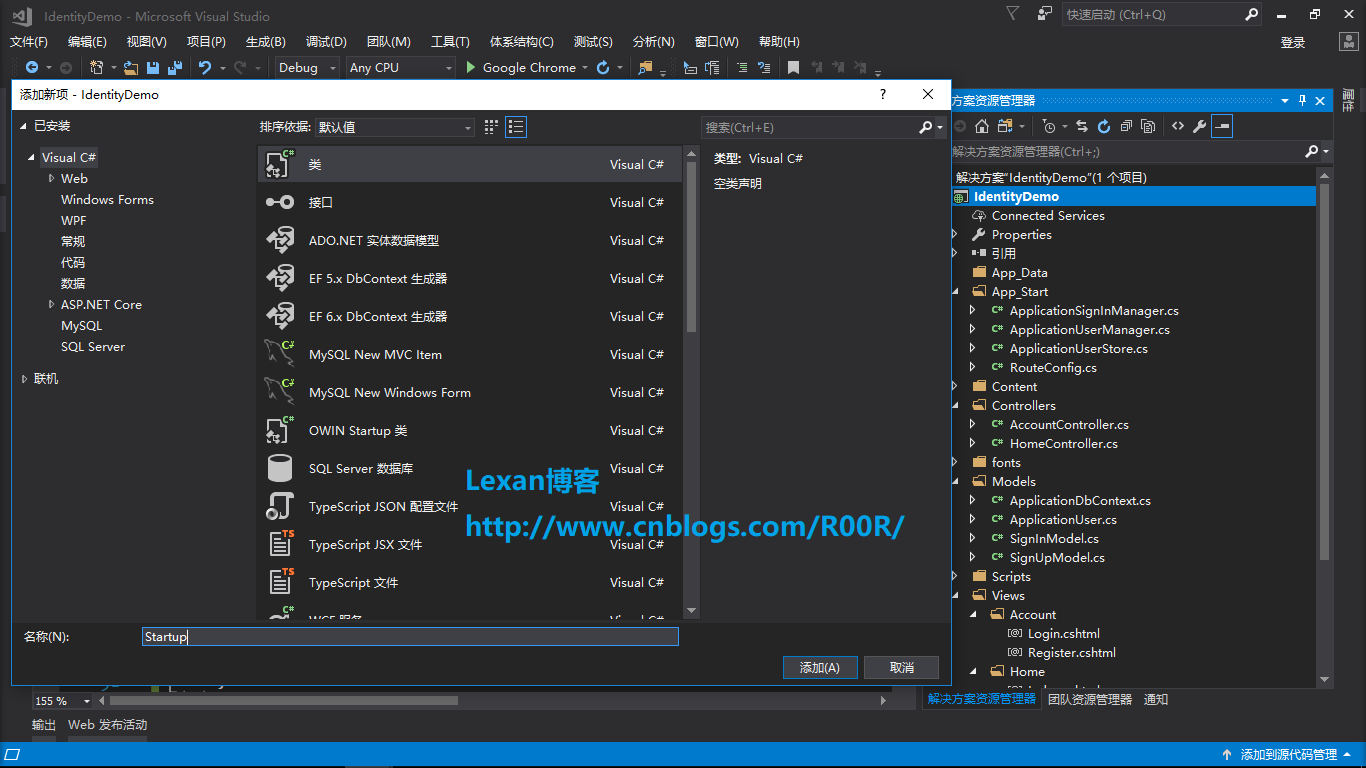

然后修改根目录的Web.Config文件

最后我们来测试一下看看效果怎么样,如下图
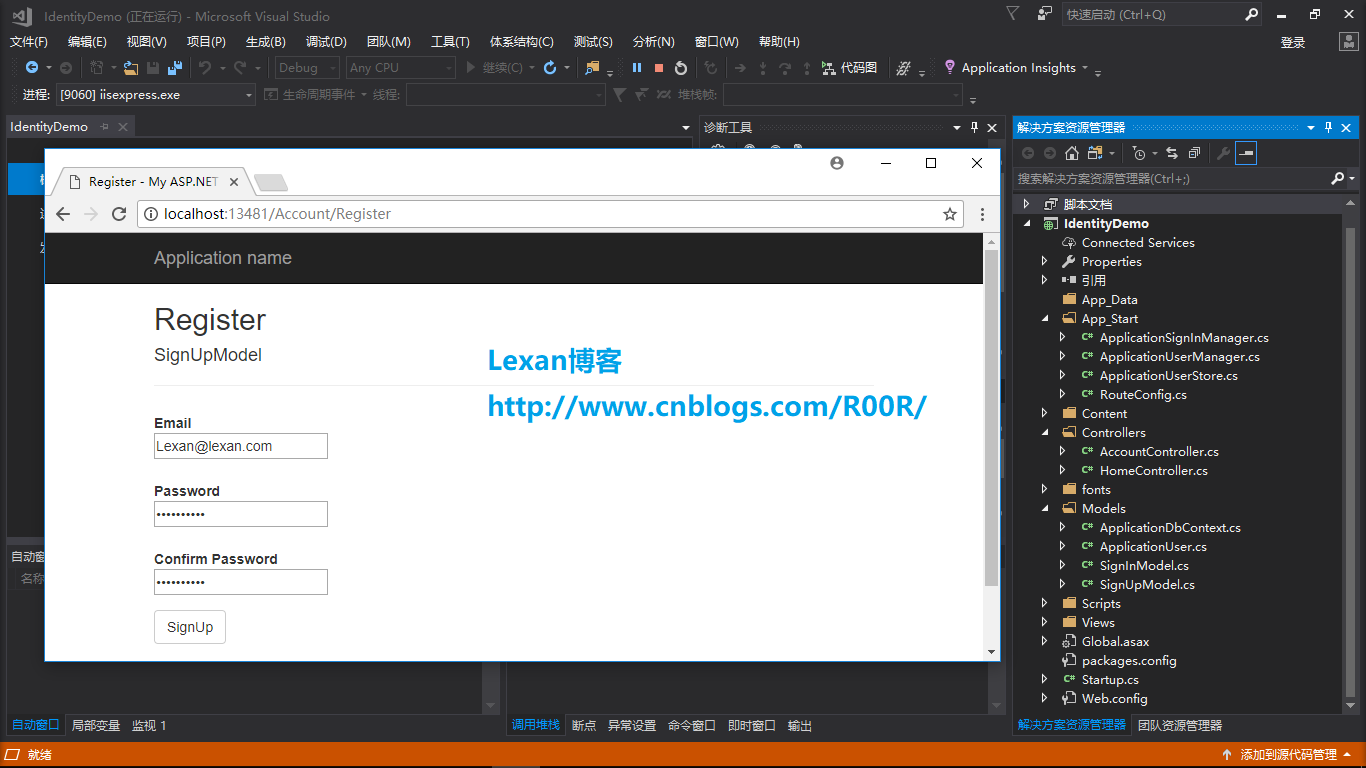
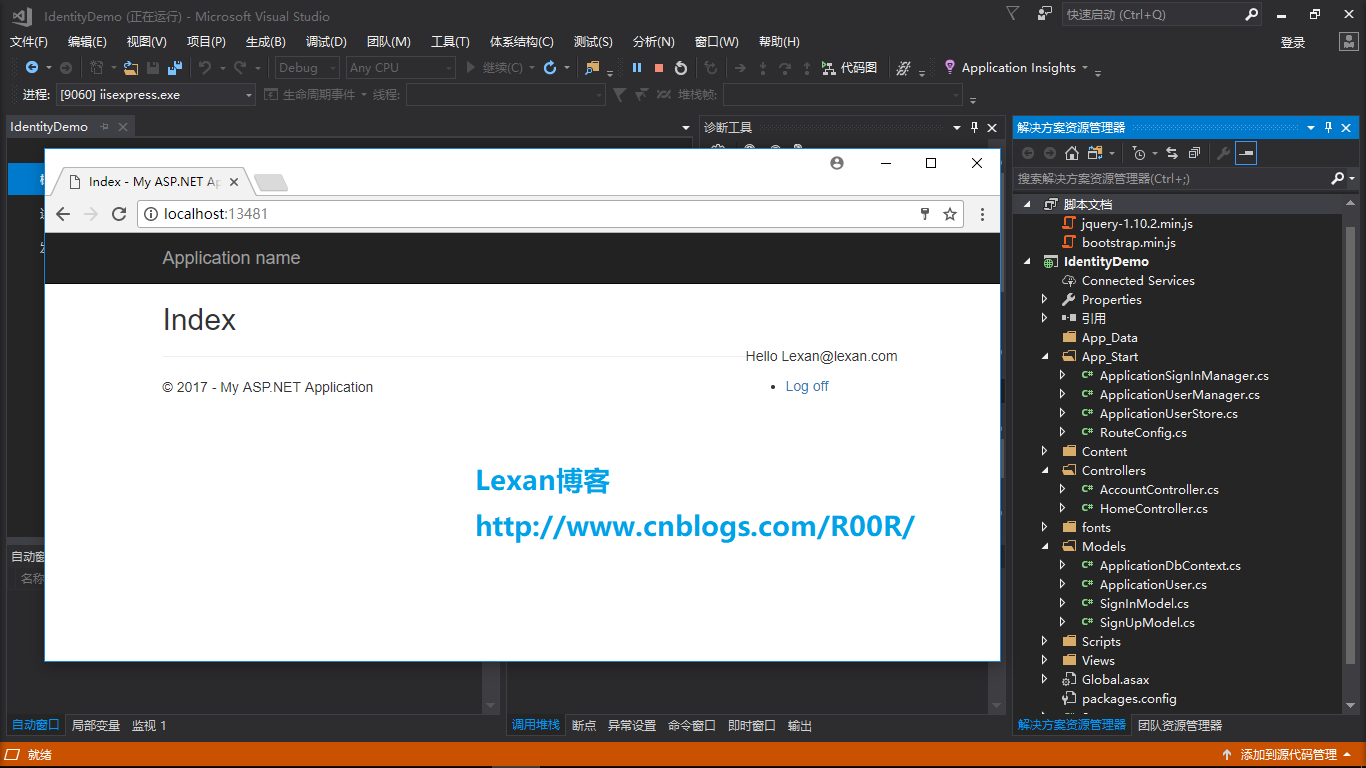
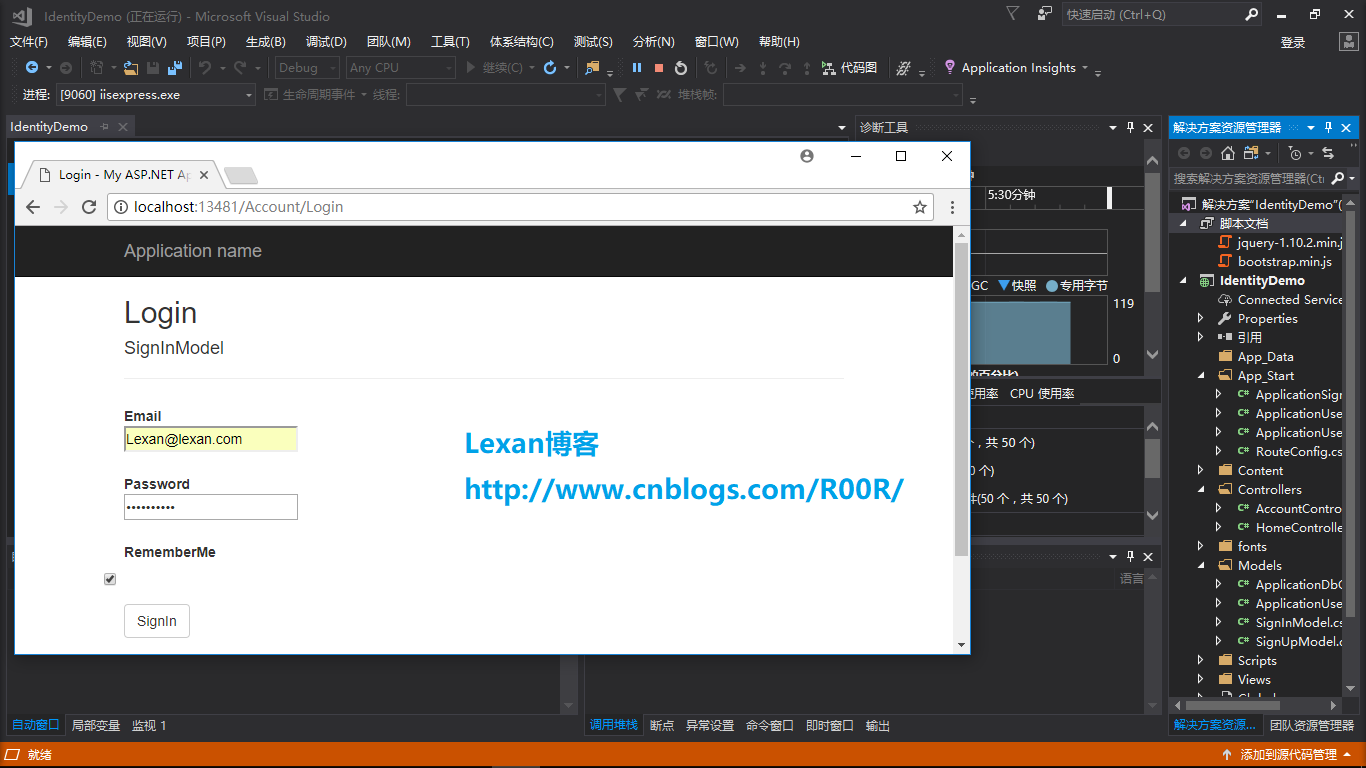

最新文章
- svn小设置
- 成功部署SSIS中含有Oracle数据库连接的ETL包
- OS Boot Loader -- 启动器
- noi 6049 买书
- cocos2dx伸缩式列表效果
- Altium Designer 常用快捷键总结
- Java 编程下 Eclipse 如何设置单行代码显示的最大宽度
- 用nodejs,express,ejs,mongo,extjs实现了简单了网站后台管理系统
- spring 中StoredProcedure的用法--转载
- Day2 Python的运算符及三大语句控制结构
- React Native学习(六)—— 轮播图
- java热加载和热部署
- Docker实用技巧之更改软件包源提升构建速度
- python随机数学习笔记
- centos7学习笔记-安装配置apache
- 小tips:HTML DOM中的children和childNodes属性
- 简单的proxy之TinyHTTPProxy.py
- Django 创建项目流程
- auto_ptr & share_ptr & unique_ptr
- 解决CentOS7-python-pip安装失败